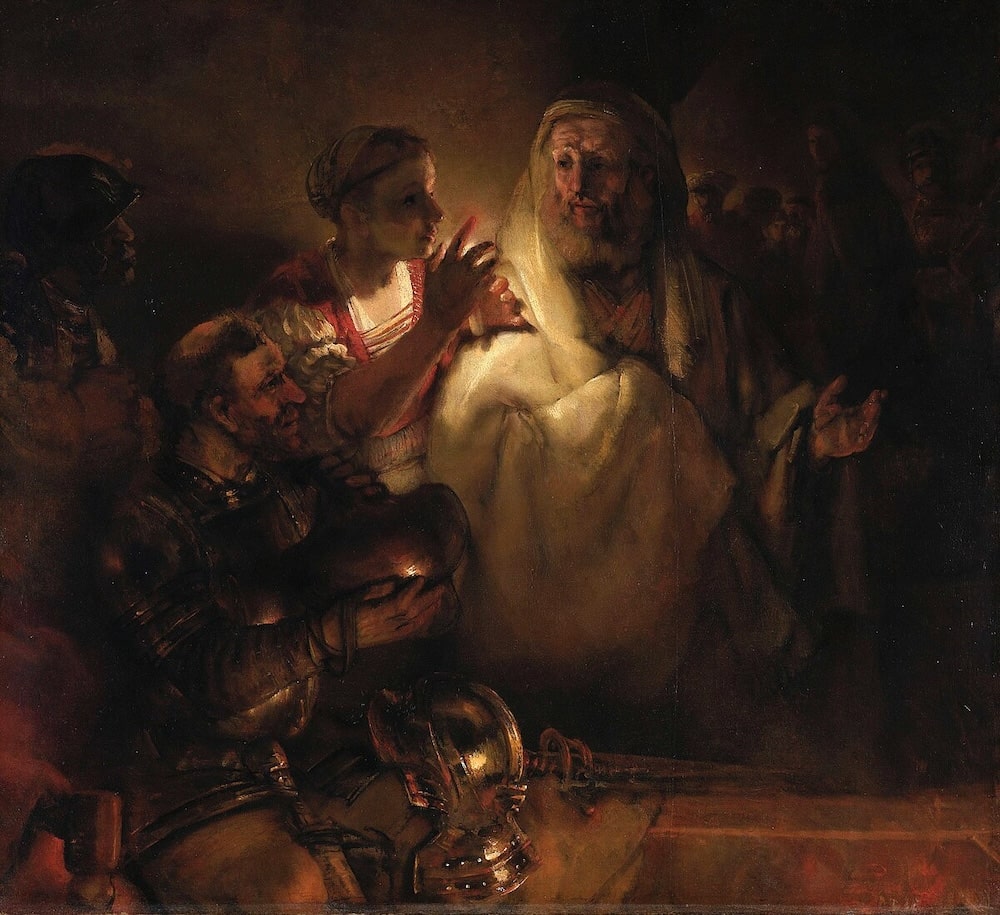The Denial of Saint Peter, 1660 by Rembrandt

After the Last Supper, Jesus has been arrested, and taken to the house of the high priest Caiaphas for trial by the Sanhedrin. The apostle Peter has gone after Jesus, where a servant woman had recognised him as one of Jesus's followers. Peter in a white robe gestures his denial, as two armed guards observe to the left.
In The Denial of Saint Peter, Rembrandt focuses on the confrontation between Peter and the maidservant, whose questioning hand forms the fulcrum of the composition. Peter, confounded by her accusation, raises his left hand to deny it. At the left are two soldiers, one seated and the other standing. Their profiles echo that of the maidservant and become increasingly distinct as they converge upon the centre, three heads recalling the three interrogations that Peter undergoes. For lurking in the shadows at the background right is the figure of Christ surrounded by his accusers, who turns towards Peter as the latter denies him. Visually, however, Peter's upraised hand succours and supports Christ at the same time as he does this.
Rembrandt's greatest stroke of genius where this theme is concerned, this idea was unbeknown to any of his predecessors, even Caravaggio. Yet it alone tells the full story, written all over Peter's features. Bathed in a candlelight that mysteriously seems to glow from within him, Peter wears an expression that is both troubled and blameless, careworn and beatific, sinner and saint. As so often in Rembrandt's art, especially in his later years, the human and the holy come together in a profoundly heartfelt manner.




















